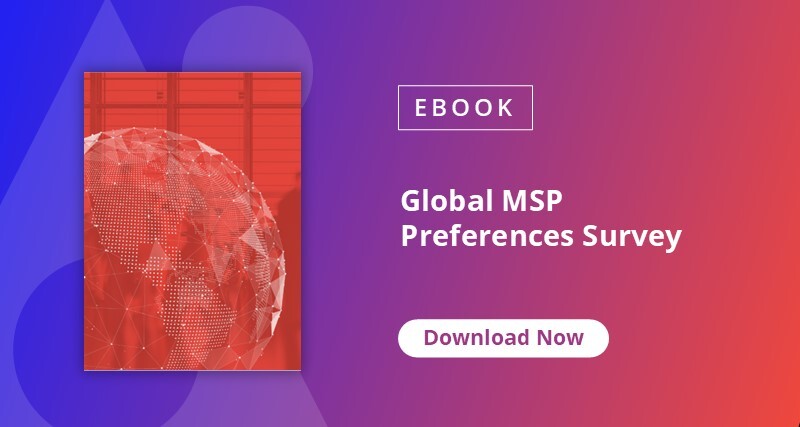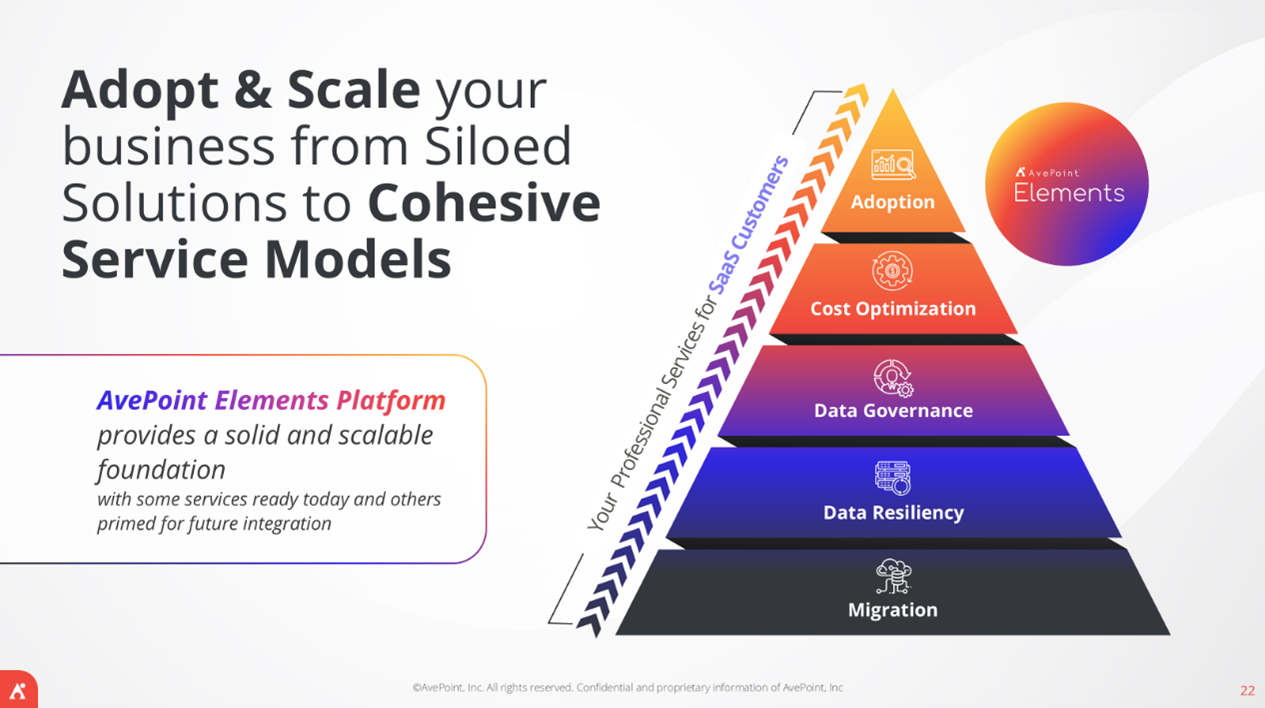In a bid to be competitive, many managed service providers (MSPs) scale their operations by leveraging numerous IT software solutions from multiple vendors, a move that allows them to provide a wide array of services to business customers that would translate to more revenue.
While doing so has benefits, having multiple vendors may also lead to complexities, such as having to manage tools from various interfaces or platforms. Reasons to consolidate vendors are becoming increasingly important.
Gartner’s Strategic Planning for Cybersecurity: 2024 Trends report revealed that 24% of IT and information security leaders consider vendor consolidation as part of their key targets. McKinsey’s Pulse survey also found that majority of business decision-makers prefer integrated solutions across IT services such as communication and collaboration (55%), cloud (53%), and security (48%).
This current landscape makes it clear that MSPs must transform siloed services into cohesive service models. More importantly, it underscores the vital role of having a solid independent software vendor (ISV) partnership to help enhance expertise and deliver comprehensive solutions.
The Need for Vendor Consolidation
Our Global MSP Preferences Survey showed that 40% of MSPs manage more than 20 vendors. Unchecked, however, this strategy generates challenges:
1. Fragmented Service Offerings
While having multiple software tools is beneficial to MSPs in offering a complete suite of solutions, getting these tools from different vendors could result in a complex experience while handling concerns from multiple clients. MSPs must operate on various platforms, leading to lack of integration and interoperability between the various tools, which may be cumbersome and inefficient. For example, handling two different types of services for a client, say backup and database management, while using separate solutions, may mean having to switch from different monitoring tools while handling a single environment alone. This becomes even more complex when MSPs have to do this for multiple clients at the same time.
Disparate systems may not communicate seamlessly, causing data silos and hindering the flow of information across platforms. This can complicate tasks such as monitoring, reporting, and troubleshooting.
2. Increased Complexity in Management
Managing relationships with numerous ISVs demands significant time and resources. For every solution that MSPs carry, they need to invest in training, support, and service development. Doing this for just five vendors can already dilute an MSP’s focus and effectiveness. This complexity manifests in maintaining certifications across various solutions and the need to master different troubleshooting approaches. These steps consume time and effort that MSPs could otherwise spend on offering recurring services to existing clients and expanding their client network.

Additionally, MSPs must navigate conflicting vendor priorities, as each vendor has their own business goals, product roadmaps, and support policies, which can sometimes be at odds with each other. For example, one vendor might push for a new, stricter security protocol that could disrupt the functionality of another vendor’s software. The MSP would then need to negotiate between maintaining robust security measures and ensuring that the client’s business operations are not hindered.
Higher overhead costs are another concern for an MSP dealing with multiple ISVs. To ensure that different software products from various ISVs work seamlessly, an MSP may need to invest in more tools or custom development to integrate disparate systems. This, coupled with compatibility issues, increases support calls, lengthens resolution times, and ultimately drives up overhead costs.
Additionally, when vendors update their products or change their partner programs, MSPs must quickly adapt their processes and retrain their teams, leading to potential disruptions in service delivery and customer satisfaction.
Benefits of Vendor Consolidation
Compared to the challenges presented by multiple vendors, MSPs face many long-term advantages after consolidating several of their partnerships:
1. Streamlined Operations
Instead of managing multiple disparate platforms, MSPs can simplify transactions by building stronger, more strategic partnerships with a vendor that offers a complete suite of services. Training and onboarding processes become more straightforward with fewer tools and platforms to master, resulting in higher productivity among staff, improved service quality, and reduced administrative overhead. Additionally, having a single platform to manage all software tools enhances overall security by minimizing potential vulnerabilities. For example, a single platform centralizes security protocols, ensuring consistent application of security patches across all tools. It also simplifies monitoring, allowing for faster identification and resolution of anomalies and thereby reducing the risk of security breaches.
2. Enhanced Service Delivery
A single management platform allows MSPs to easily provide consistent updates and support through a single-pane view of multiple solutions, ensuring that services remain current and reliable. For example, an MSP can view a client’s environments across multiple tenants in a single dashboard, allowing the MSP to immediately act on potential concerns, such as failed or skipped jobs. This single-pane view also allows MSPs to have a complete view of the clients’ infrastructure and offer ways to improve and secure their digital environment. Simplified transactions and reduced administrative burden mean that MSPs can allocate more resources to customer-facing activities, improving overall service delivery and client satisfaction.
Additionally, by limiting partnerships with vendors that offer a complete suite of services, MSPs can do away with switching between multiple products and develop deeper expertise in the suite of solutions they provide, resulting in faster issue resolution and more knowledgeable support for clients.

3. Cost Savings and Increased Profitability
By consolidating vendors, you can negotiate better pricing and volume discounts due to larger purchase orders with fewer suppliers, directly reducing procurement costs. The streamlined operations resulting from fewer vendor relationships can lead to reduced administrative and operational expenses, as you would need to spend less time managing contracts, billing, and support interactions. To make this process even more efficient, using SaaS billing software can simplify and automate invoice management and payment tracking, helping to control costs and improve financial accuracy. Since fewer vendors also means a reduced need for multiple overlapping solutions, this leads to lower software licensing and maintenance costs.
There's no other way to put it: Vendor consolidation can have a transformative impact on an MSP's overall operations, delivery, and profit margins. By forming tactical partnerships and establishing a roadmap to consistent services with minimal disruption, MSPs not only solidify their reliability to their current customer base but also explore and create new market streams for new clients.
Drive Enhanced Quality and Reliable Service with AvePoint
For MSPs determined to simplify transactions, improve efficiency, and unlock higher earnings, vendor consolidation is a critical step in the right direction. By reducing the number of vendors, MSPs not only minimize operational complexities but also develop deeper expertise to provide consistent support to their clients. Ultimately, focusing on tactical partnerships and establishing roadmaps to consistent services with minimal disruption empower MSPs to achieve both short- and long-term goals.
On one hand, MSPs are able to immediately solidify their reliability to their existing customer base while on the other, they are empowered to explore new market streams. Additionally, this strategic approach enables MSPs to allocate resources more effectively, fostering innovation and enhancing overall service quality.
As a global Top 5 Azure Co-Sell ISV leader, AvePoint is an optimal partner for MSPs eager to realize the advantages of vendor consolidation. AvePoint Elements helps MSPs streamline operations, automate processes, and optimize costs by managing all solutions in a single platform across multiple customer environments such as Microsoft, Google, and Salesforce.

Through AvePoint's integrated service model, MSPs can drive growth and operational efficiency to establish market leadership. This unified approach strengthens operational capabilities while enabling MSPs to provide advanced technologies and exceptional support, fostering sustained success and customer retention.
By partnering with AvePoint, MSPs can leverage cutting-edge technology to enhance service delivery, improve client satisfaction, and drive business growth. Our robust platform not only simplifies management but also ensures compliance and security, empowering MSPs to ensure data security and business continuity.
Join the AvePoint Partner Program today and transform your business operations for a competitive edge in the market.


